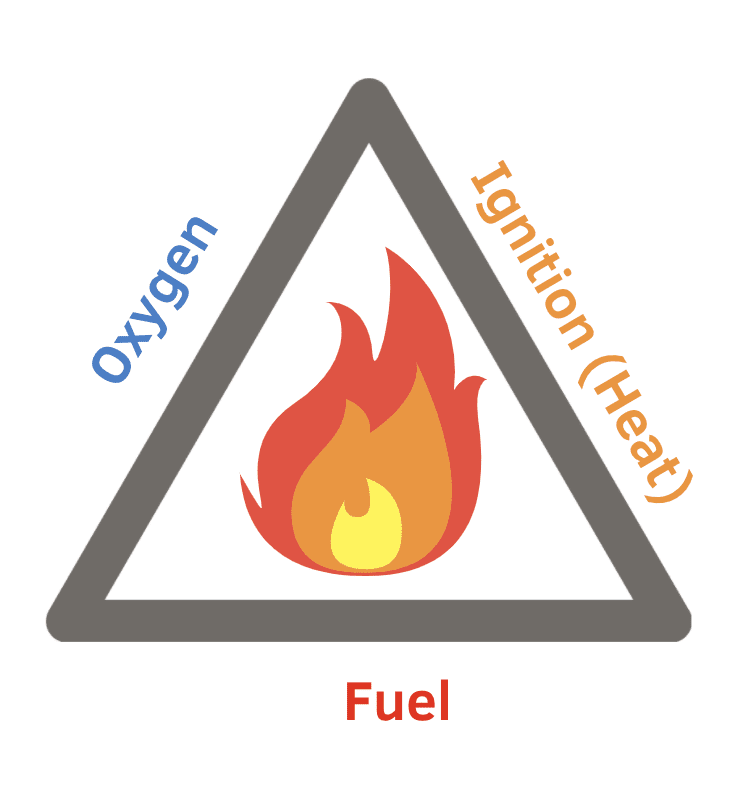Basic Fundamentals of Fire Protection

Subscribe to our Blog
The term “safety science” is essentially the practice of mitigating risk – from accidents to illness to fires and any other event that can cause harm to people, property or the environment. Not only are you a facility maintenance, engineer or facility professional, you are also, in your own way, a facility safety scientist – spending your day preventing loss and harm to the people and property around you through a practice called fire protection.
Fire loss can be, and often is, one of a facility’s greatest threats. Loss of life, property damage and the financial risk associated with damage from catastrophic fire are an impending danger no matter what type of facility it is that you manage. Fire prevention and protection are critical components of any facility or safety manager’s job – adding risk mitigation to your long list of duties each day. By now, we all know that fires can strike just about any workplace at any time. The financial and emotional effects can be felt by an organization like yours long after the fire is put out. Because of this, the Occupational Safety and Health Organization (OSHA) is responsible for setting the national standards for employee safety and health, and in turn, your facility is responsible for ensuring and setting the safety standards of your patients, employees and visitors.
According to OSHA, there are three main elements of fire safety in the work environment. They consist of:
- Fire prevention
- Safe evacuation of the workplace in the event of fire
- Fire Protection
The differences between fire protection and fire prevention are quite remarkable but are meant to work in tangent with one another and go hand-in-hand when developing a facilities fire safety plan. Let’s get into the specifics and the differences between the two.
Fire Prevention vs. Fire Protection
What’s the difference between fire prevention and fire protection and what role do you play in each? Just like each term is inherently unique, your responsibilities in each area are drastically different.
Fire prevention: The National Fire Protection Association (NFPA), defines fire prevention as, “The prevention of fire by the implementation of measures intended to minimize the risk of an outbreak of fire, or of harm or damage in the event of a fire.” In essence, fire prevention is the elimination of the the possibility of a fire being started in the first place. In order for a fire to ignite, there are three elements that are required to be present. Prevention occurs when one of these elements is removed from the equation.
Fire Protection – NFPA defines fire protection simply as, “Methods used to achieve any of the following: fire prevention, fire detection, and fire suppression.
Three Elements of Fire
There are three elements required for a fire to start and to continue burning. Remove any of these elements and the fire will go out – oxygen, ignition (or heat) and fuel. Air (oxygen) can be controlled with smoke control systems and HVAC systems, but where air can’t be controlled, the focus is on limiting combustibles or fuel and ignition sources.

Your facility likely has programs in place to to prevent fires. General housekeeping programs and protocols are put into place to eliminate unwanted fuel sources and possible ignition sources. Almost as importantly, are the inspection protocols you have in place to identify potential fire ignition and fuel hazards.
Understanding the three principles of fire lays the groundwork for how to suppress and contain a fire and helps us better understand the principles of fire protection.
Principles of Fire Protection
- Prevention
- Detection & Suppression
- Containment
Fire protection consists of a combination of different detection and suppression fire systems and protocols that are used to defend your property. The detection and suppression system of the house, often referred to as active fire protection, consists of systems that actively put a fire out. These systems consists of things like sprinkler systems, extinguishers and fire alarms. Passive fire protection systems such as fire rated walls and barriers, fire and smoke dampers and fire doors. work to contain and compartmentalize a fire to keep it from spreading to the other areas of the building. Together, these systems work to extinguish, control or slow down a fire from spreading. Used in combination with your internal fire prevention methods, providing you with the ultimate in fire protection and widely accepted by fire protection engineers as the best way to help insure against loss of life and property.





